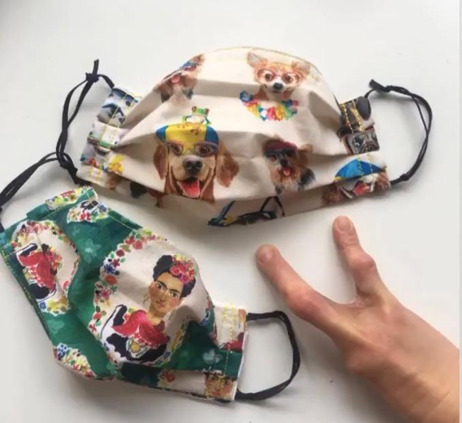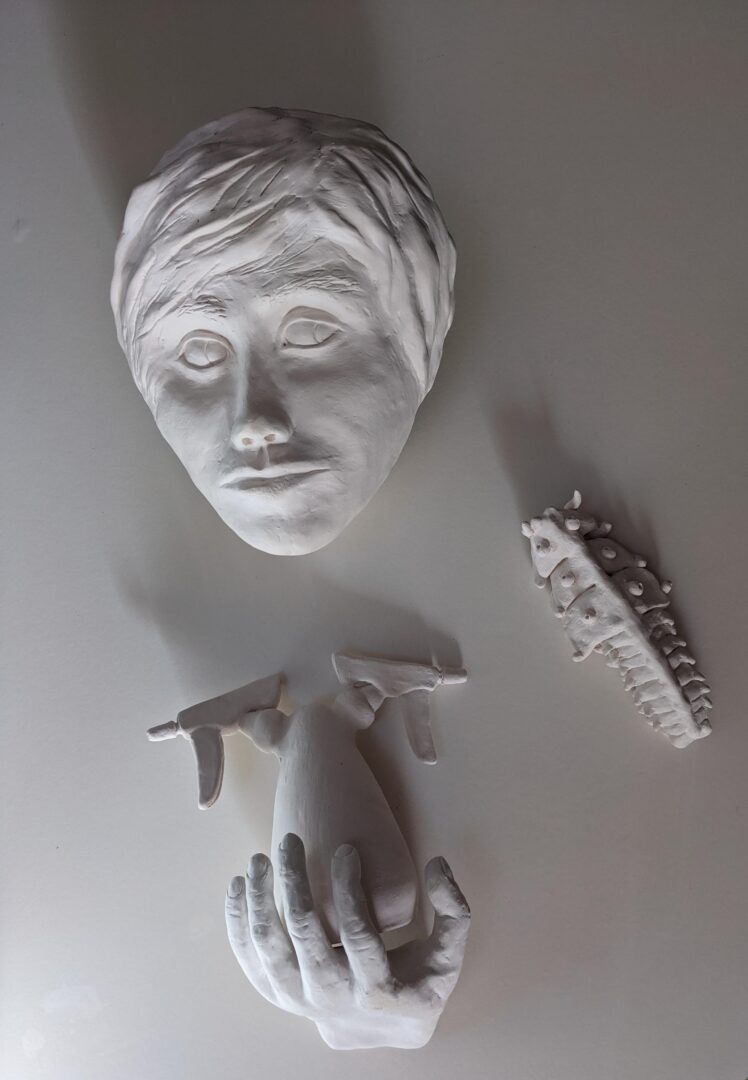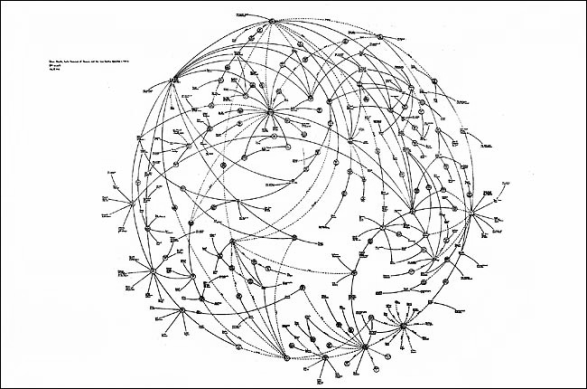The eight essays in Ben Davis’ Art in the After-Culture are centered on the interchanges between cultural production and economic development in contemporary society. Largely told through the lens of leftist aesthetic theory, the book pushes against exploitative notions of capitalist systems and ambitions towards decentralization. Davis likens art to a “survival kit” and advocates for creative practitioners to strategically influence the direction of society.
Keyword: art
Review of Breathing Aesthetics by Jean-Thomas Tremblay (Duke University Press)
Jean-Thomas Tremblay’s Breathing Aesthetics draws our attention to how respiration as a cultural analytic maps the uneven distribution of risk in our contemporary moment. Intervening at the intersection of queer theory and the environmental humanities, Tremblay deciphers an archive of cultural texts that range from CAConrad’s ritualized poetry to Ana Mendieta’s elemental performance art and Toni Cade Bambara’s novel The Salt Eaters. In so doing, they reveal an understanding of how breath registers precarity across race, gender, and disability, while also serving as a mechanism for healing and care. This discerning analysis, combined with a focus on the exchange between body and milieu, makes a case for respiration as a distinctly ecological and embodied relation. Ultimately, Breathing Aesthetics provides crucial insight into how aesthetic expressions of respiratory variations evidence a tension between morbidity and vitality within bodies whose ability to breathe is most endangered.
Autistic, Surviving, and Thriving Under COVID-19: Imagining Inclusive Autistic Futures—A Zine Making Project
This article takes up Mia Mingus’ call to “leave evidence” of how we have lived, loved, cared, and resisted under ableist neoliberalism and necropolitics during COVID-19 . We include images of artistic work from activist zines created online during the COVID-19 pandemic and led by the Re•Storying Autism Collective. The zines evidence lived experiences of crisis and heightening systemic and intersectional injustices, as well as resistance through activist art, crip community, crip knowledges, digital research creation, and the forging of collective hope for radically inclusive autistic futures—what zine maker Emily Gillespie calls “The neurodivergent, Mad, accessible, Basic Income Revolution.” We frame the images of artistic work with a coauthored description of the Collective’s dream to create neurodivergent art, do creative research, and work for disability justice under COVID-19. The zine project was a gesture of radical hope during crisis and a dream for future possibilities infused with crip knowledges that have always been here. We contend that activist digital artmaking is a powerful way to archive, theorize, feel, resist, co-produce, and crip knowledge, and a way to dream collectively that emerged through the crisis of COVID-19. This is a new, collective, affective, and aesthetic form of evidence and call for “forgetting” ableist capitalist colonialism and Enlightenment modes of subjectivity and knowledge production that target different bodies to exploit, debilitate, and/or eliminate, and to objectify and flatten what it means to be and become human and to thrive together.
A Dialogue and Reflection about the Masks for Crips Project
Masks for Crips was a mutual aid project that centered the Chicago disability community. Alison Kopit and Chun-shan (Sandie) Yi began the project at the onset of the COVID-19 pandemic, and it ran from March 2020 through July 2020. Early in the pandemic, when personal protective equipment (PPE) was difficult to come by and the state was not caring for those most impacted by the pandemic—disabled people, essential workers, people living in congregate facilities, and unhoused people, to name a few—the project provided homemade masks to disabled people and their care teams in the Chicagoland area. Masks for Crips addressed an infrastructural gap and disability community need in an urgent way, and provided information about how to use and care for masks, as well as best practices for reducing risk surrounding COVID-19. The project was born through text message-based conversation in March 2020 as Alison and Sandie held space for each other by sending memes, texts, and support informally. From those moments of connection, they proceeded to expand outward and develop a mutual aid project that delivered about 300 masks, start to finish. The project brought together delivery and mask-making volunteers while serving as a means of connection and an expression of disabled care during an isolating time.
Our Thoughts: Reflections on OCD, the Pandemic, and Society
In this socially engaged and collaborative project, the topic of obsessive-compulsive disorder (OCD) is explored artistically. A poem and sculpture depict and contemplate the lived experience of OCD and how it relates to contemporary times. The project grew out of a friendship between Mick, the alias for someone who has OCD, and Dana Fennell, a researcher who studies OCD.
Security Blanket: Neuroqueer Knitting in Pandemic Times
This article presents neuroqueer knitting as a cripistemological practice in the context of the COVID-19 pandemic, during which the author realized that knitting was part of how they moved through trauma. Tracing the process of making a blanket during part of the pandemic, a time in which they were also relocating, the author argues that knitting offers a knowledge-making practice aligned with their autistic ways of being in the world. Treating this blanket as theoretical material, the author uses it to challenge ableist ideas of autistic people as lacking the capacity to narrate their experiences. Instead, this blanket is used to reflect alternative modes of knowing that document the author’s continued existence and survival in moments of trauma and upheaval.
Co-Option and Erasure: Mizrahi Culture in Israel
Much of the rhetoric around racism and racialized discrimination in Israel centers on Israeli Jewish treatment of Palestinians. However, an examination of the experience of Mizrahi Jews can also be instructive as to the ways that racism and white supremacy function within Israel—through a privileging of Ashkenazi Jews, whose experiences are used to define the contemporary Israeli Jewish experience. For example, Israeli Jewish artist of Yemeni descent Leor Grady’s work addresses the marginalization, erasure, and exile of Yemeni Mizrahi Jews in Israel. In his video work Eye and Heart, Grady highlights how, in its absorption into Israeli folk dance, traditional Yemeni dance has been uprooted from its site of origination and “whitewashed.” Through a discussion of this work and others alongside which it was shown in the exhibition Natural Worker, I argue that Grady’s articulation of the co-option of Yemeni culture by the dominant Ashkenazi (white) Israeli mainstream demonstrates how racialization plays out in the cultural realm of Israel. This method of privileging whiteness can be seen in the Israeli co-option of other Mizrahi and Palestinian cultural elements, such as couscous, hummus, and Arabic words such as “yalla.” This examination of Grady’s work allows for an understanding of how this privileging of whiteness functions within the Jewish Israeli context.
Review of Art as Revolt: Thinking Politics Through Immanent Aesthetics, edited by David Fancy and Hans Skott-Myhre (McGill-Queen’s University Press)
The entanglements of “the aesthetic” and the political-economic have long been addressed in the areas of philosophy, cultural studies, and media theory. In this edited volume, David Fancy and Hans Skott-Myhre have assembled a collection of essays aimed at examining a range of aesthetic approaches to political projects untethered to “capitalist assumptions,” while looking toward the possibilities of “post-capitalist futures.” Through their respective contributions, the authors offer their readers ways to envision the potential for running lines of flight away from capital’s apparatuses of capture by engaging in creative practice.
Review of Insurgent Aesthetics: Security and the Queer Life of the Forever War by Ronak K. Kapadia (Duke University Press)
Ronak K. Kapadia’s deeply conversant and well researched Insurgent Aesthetics: Security and the Queer Life of the Forever War brings queer, affect-oriented methodologies to bear on an analysis of Arab, Muslim, and South Asian diasporic art. It is these communities after all, Kapadia points out, who undergo increased scrutiny in the United States and Europe after September 11, 2001. According to the author, these diasporic artists engage in an insurgent aesthetic “against empire’s built sensorium,” which is a visual cultural practice that offers an alternative embodied critique of “US empire’s perverse logics of carcerality, security, and war” (10).
Political Power and the Industrial Development of Cultural Artifacts in China
With national policy support on industries that produce cultural goods and artifacts, Chinese industries have developed quickly in recent decades. Some cities and their industries are led by the central government, while others are led by the local government. In this paper, the author uses ceramic industry clusters in Jingdezhen city (central-led) and Longquan city (local-led) as a comparative study to illustrate the political power relations of government-led cultural artifact industry development in China. In sum, the excessive emphasis on political hierarchy and centralized control of production management will weaken the cultural essence of the local cultural artifacts. The localized government-led development strategy is positive to preserve the cultural essence and design a befitting local industry development strategy in Chinese cities.
Producing Art in the Ruins of a Former Colonial Industrial Hub: Arts Practices in Bulawayo, Zimbabwe (2000–2017)
This paper, focusing on Bulawayo, the country’s second largest city and regarded as the country’s cultural capital city, seeks to critically interrogate the working conditions of creative artists and other content producers against the background of an imploding cultural landscape. The paper seeks to establish ways in which cultural workers in Bulawayo negotiate the “precarious conditions” under which they work as they are exposed to the informalization of their labour, wage squeezes, temporariness, uncertainty, and pernicious risks in their work (Standing 2011; 2014; Waite, 2008; Munck, 2011). Artists in Bulawayo, Zimbabwe’s second largest city and the country’s former industrial hub, face a harsh operating environment such that some have even quit their craft. Some of the artists interviewed have concluded that their (bare) lives are more important than the preoccupation of producing art as this has had a toll on their families. However, there still exists a handful of artists who continue to struggle against all odds with the hope of building a sustainable arts industry in the country’s second largest city.
When Shock is No Longer Shocking: The Role of Seduction in Revitalizing Benjamin’s Dialectical Image Under Late-Capitalist Conditions
Walter Benjamin’s conception of the dialectical image provided a strong foundation for the development of political art during the first half of the twentieth century. However, with the rise of late capitalism and its attendant reorganization of our experience of shock, culture, and history itself, the concept must be reevaluated. This is so not least because, whereas Benjamin operated on the presumption that shock had a kind of self-evident revelatory power, we now occupy a field in which shock is no longer shocking. Through a reconsideration of the contributions made by artists Mark Lombardi and Cindy Sherman, I show how Benjamin’s concept might be saved by strategies of epistemological seduction that operate, not as substitutes for shock, but as a concrete strategy for revitalizing our capacity to experience it.
Art as Protest, Cooking as Resistance: Everyday Life in Taipei’s Housing Rights Movement
From 2010 to 2013, during the height of Taiwan’s housing rights movement, Participatory Art became instrumental in defending the right to the city. In this housing rights movement, artists, students, residents, and other professionals united to challenge neoliberal urban development. Two protest art projects in Taipei, Operation Little Barbarossa and Cooking at the Front Line, illustrate the interdisciplinary, trans-social strata collaboration. The artworks responded to encroachment on land and estate by the Taipei City government and real estate developers. The art forms employed included performance art, dance, writing, sculpture, graffiti, graphic design, and photography. Through everyday acts, such as cooking and driving, the two works lent voice and visibility to marginalized residents. The language and imagery of these protest gestures produced a theatricality that was at once jovial, amiable, critical, and contentious. The coexisting confrontational and convivial tones also encapsulate Taipei’s housing rights movement, in which the Taiwan Alliance for Victims of Urban Renewal exercised a central role. This article integrates findings from archival analysis, interviews, participation observation, and site visits. The content considers the relationship among Participatory Art, social activism, urban planning, and neoliberalism. The author also draws connections between the visual and cultural aspects of the featured Participatory Art. The text concludes that Operation Little Barbarossa and Cooking at the Front Line offer a broader and richer interpretation of Participatory Art. They demonstrate diverse adaptations and multiple approaches to facilitating socially-minded, collaborative art. They also confirm Participatory Art’s ability to agitate problematic dynamics in the (re)construction of global cities.
Missives and Other Un-Notes
Beginning his series of disorienting and theatrical vignettes with an extended introduction, Gamboa describes his childhood and young adulthood coming of age in Los Angeles in the 1960s and 70s. It is through these stories of prejudice in elementary school and of mass action against police brutality and the national government’s neglect of communities of color, Gamboa implies, that readers should approach his text. Missives and other Un-notes skewers myths of US national identity, masculinity, and whiteness, placing readers in a dystopic world of violence, surveillance, and the constant threat of annihilation.
Review of After Art by David Joselit (Princeton)
David Joselit’s slim volume “After Art” offers multiple intriguing frameworks to analyze art in the present-day globalized art world. After Art backs away from the traditional approach of artist intent and production and looks at what happens to images once they are attached to the networks that circulate them. Instead of proselytizing individual or even original artworks, Joselit champions images that are constantly reproduced and remediated by artists and architects such as Tania Bruguera, Ai Weiwei, Sherrie Levine, Matthew Barney, Le Corbusier, and Rem Koolhaus.














